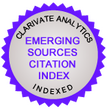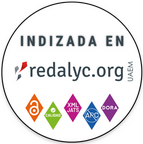GOODBYE TO PAPER, HIGHLIGHTERS, SCISSORS AND GLUE: INNOVATING THE CONTENT ANALYSIS PROCESS THROUGH ATLAS.TI
DOI:
https://doi.org/10.13058/raep.2015.v16n2.236Keywords:
Content analysis, Atlas.ti software, StrategyAbstract
Atlas.ti software comprises a tool for the analysis of qualitative data that can facilitate its management and interpretation. However, the use of this software has been much less frequent in strategy, despite the increasing use of content analysis in this area.This study aimed to demonstrate, through an example, the applicability of Atlas.ti software in conducting thematic content analysis in the strategy area. The example used was a survey conducted on two accounting firms in Curitiba, Paraná (PR), and applied to the firm’s directors, as a data collection instrument, through semi-structured interviews. With the help of Atlas.ti 5.0 software, thematic content analysis was undertaken and brought to light that the two offices have a similar trajectory; they are characterized as family members; they hold or held centralization of power; made innovations; do not have formalized plans; and, most of their strategies are emerging. The example used allowed for the demonstration of: the encoding process; the writing of research notes and comments; the establishment of relationships between the elements analyzed; and, the grouping and management of such elements. It is hoped that this study contributes to stimulating the use of Atlas.ti software and assists in improving the consistency and betterment of qualitative research through the ease of empirical verification.
Downloads
Downloads
Published
How to Cite
Issue
Section
License
By publishing a manuscript in the journal Administração: Ensino e Pesquisa (RAEP), the authors declare that the work is of their exclusive authorship and therefore assume full responsibility for its content. The authors grant RAEP a non-exclusive rights license to use the work in the following ways:
(1) Sell and / or distribute the work in hard copies or electronic format.
(2) Distribute parts of the work as a whole to promote the journal through the internet and other digital and printed media.
(3) Record and reproduce the work in any format, including digital media.
Authors and readers are permitted to share the material, use it in classes, for presentations and also for other purposes, and to create new knowledge based on any RAEP publication, as long as the due credit is attributed to the original work and the respective author(s), through citations, references, and other means.
The journal adopts preventive measures to identify plagiarism using software designed for this purpose.
RAEP does not charge authors for the article submission nor for the publishing of approved articles.
In line with the journal's policies, each published article will be given a Creative Commons CC-BY 4.0 license.










